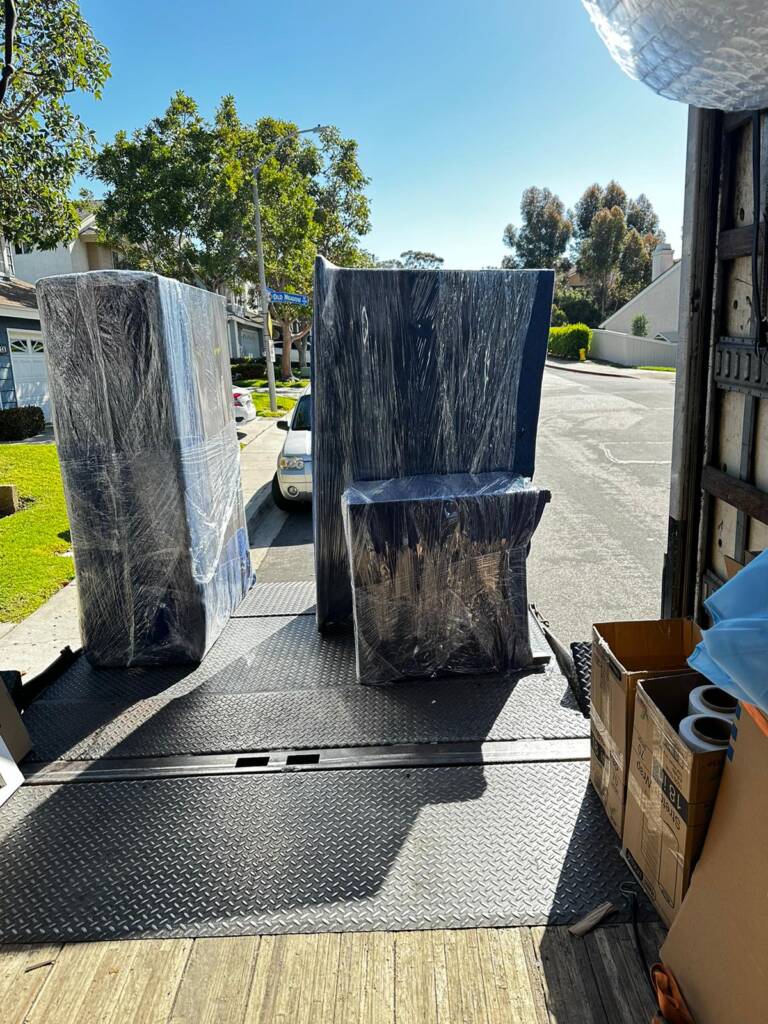How to Choose Best Furniture movers
Imagine the exciting prospect of transitioning to a new home in San Diego—a fresh start marked by the sunshine and vibrancy the city is known for. Amid this optimism, the thought of moving heavy, delicate furniture may cause a twinge of concern. Selecting the right furniture moving company becomes critical.
Choosing a mover is more than just finding muscle to transport items. It’s about trust, expertise, and seamless execution.
As of today’s date, the multitude of options for relocating furniture in San Diego can seem overwhelming. Analyzing key factors will streamline the decision-making process and ensure a satisfactory transition.
Evaluating Company Reputation
When venturing into the realm of selecting a proficient furniture moving company, one must peruse past client testimonials and scrutinize the history of the company’s operational consistency. Analysis of Better Business Bureau (BBB) ratings, along with industry recognitions and awards, is central to discerning the quality of service one can expect.
Recognized certifications and professional affiliations are hallmarks of a mover’s credibility. It is paramount to verify that the prospective company possesses the American Moving & Storage Association’s (AMSA) ProMover accreditation to ensure adherence to industry standards and ethical practices.
Online Reviews and Testimonials – furniture movers
Exploring client feedback provides valuable insights into a mover’s performance and reliability, informing your choice. Reviews unveil experiences with timeliness, care for possessions, and communication.
Reputable movers often feature a portfolio of testimonials, showcasing their commitment to service excellence. An abundance of positive reviews generally indicates a trustworthy and competent provider, ensuring peace of mind.
Eighty-four percent of people trust online reviews as much as personal recommendations.
Sifting through reviews calls for attentiveness to recurring themes. Whether encountering mentions of meticulous packing or the resolution of unforeseen issues, these narratives shape your expectations and support informed decision-making.
Industry Certifications and Awards
Recognizing certifications and awards is pivotal in assessing movers’ proficiency and professionalism.
- American Moving and Storage Association (AMSA) ProMover Certification
- Better Business Bureau (BBB) Accreditation
- California Moving and Storage Association (CMSA) Membership
- International Association of Movers (IAM) Affiliation
- Federal Motor Carrier Safety Administration (FMCSA) Registration
- Awards for Customer Service Excellence
- Local Business Chamber of Commerce Recognition
These endorsements endorse a furniture mover’s credibility and dedication to the craft.
Certifications can be a differentiator, pointing to movers who invest in quality and training.
Service Range and Availability for furniture movers

Confirm the geographical areas that a moving company covers to ensure they align with your specific relocation needs. A mover’s scope is fundamental to your selection process.
Look for versatility in service offerings, such as residential and commercial moves, storage options, or specialized handling, which can be determinants in choosing a provider that can cater to comprehensive moving requirements.
Lastly, assess the company’s operational time frames, including weekends and holidays, to guarantee flexibility that matches your scheduling constraints.
Local vs. Long-Distance Moves
When considering a move, it’s paramount to differentiate between local and long-distance relocations. Criteria and preparation can vary considerably based on the distance.
For local moves, logistical considerations might not be as extensive as their long-distance counterparts. Generally, local relocations are within the same city or region. This often means lower transportation costs and shorter moving times, translating to the potential of completing the move within a single day. Adequate planning, however, remains essential to ensure a smooth transition from one home to another.
Conversely, long-distance moves require a heightened level of coordination and regulatory compliance. These moves typically cross state lines and may involve traversing hundreds or thousands of miles. Consequently, it is imperative to engage a mover with a robust network and experience in managing interstate transport regulations and potential logistical challenges that may arise.
Lastly, selecting a moving company that specializes in the type of move you’re planning is crucial. While some movers may excel in local moves, others are better equipped to handle the complexities of long-distance relocations. Review their service offerings and testimonials to gauge their proficiency in handling similar moves. Entrusting your possessions to a company with a proven track record in your specific moving type can mitigate risks and provide peace of mind.
Specialized Furniture Movers

Furniture movers disassembly and reassembly is a critical service.
Moving can be more than just transporting items from point A to point B. It often involves specialized services such as the disassembly and reassembly of furniture. These tasks require a skilled furniture movers proficient in the intricate details of various furniture types, from basic bed frames to more complex sectional couches. Furthermore, movers must be adept in the handling of delicate items that require disassembly or special protection.
Antique and fine art moving expertise is non-negotiable.
When relocating items of high value or special significance, such as antiques or fine art, the mover’s expertise becomes paramount. In addition to physical protection, this entails an understanding of environmental factors that could affect these items during transportation.
Specialized packaging materials are part of the service.
The best movers offer specialized packaging materials tailored to your specific needs—whether it’s custom crates for sculptures or acid-free tissue for paintings.
We ensure your belongings are transported safely.
Our comprehensive insurance options reflect our commitment to safeguarding your possessions. With proper coverage in place for the duration of the move, you can rest assured that your belongings are adequately protected against unforeseen events.
Pricing and Value Transparency
Establish clear expectations for moving costs. In selecting a furniture moving company, ensure that clear pricing structures are communicated upfront. Assess the binding and non-binding estimates provided to discern differences in cost implications, which could substantially affect your budget. Detailed quotes should delineate all potential expenditures, avoiding any surprises on moving day.
To ascertain the true value offered by moving services, scrutinize the breakdown of quotes. Look for a “Bill of Lading,” an indispensable document that itemizes services and costs, functioning as a contract between you and the movers. It’s essential to identify any additional fees for services like long carries, stair charges, or storage-in-transit that may only become noticeable post-service. Ultimately, a mover’s transparency concerning charges is indicative of their overall reliability and trustworthiness in handling your possessions.
Understanding Estimates and Quotes
Estimates are not equivalent to final charges.
When soliciting quotes from furniture movers, it’s vital to understand their significance. Estimates serve as preliminary evaluations of the expenses associated with your move, providing an approximate cost based on the mover’s assessment of your belongings, distance traveled, and required services. These are usually either non-binding or binding, differing in how they affect your final bill. Notably, a non-binding estimate is subject to adjustment whereas a binding estimate typically ensures a fixed cost.
The distinction between binding and non-binding is essential.
It is prudent to obtain multiple estimates for comparison. This comparative process – examining both the binding estimates promising a guaranteed price and the non-binding which may adjust based on actual weight or services rendered – gives you financial foresight and facilitates informed decision-making for your move.
Request comprehensive and itemized quotes.
Understanding the components that factor into moving costs is crucial for a transparent process. Endeavor to obtain itemized quotes that clearly outline each expense, including labor, transportation, packing materials, and any additional services. Confirm that the quote aligns with the latest industry standards established by the American Moving & Storage Association (AMSA) or local regulations. This diligence ensures that your expectations and the movers’ obligations are unequivocally understood, reducing the prospect of unexpected costs.
Hidden Costs and Insurance Options
Beware of potential hidden fees that may not be immediately apparent in a furniture movers estimate. These could include charges for long carries, stair fees, or bulky item handling, altering the final bill substantially.
When evaluating potential movers, ask explicitly about their insurance offerings and the extent of coverage included. Standard liability may not suffice, leaving you vulnerable in the event of damage or loss during transport.
Furthermore, inquire about any additional insurance options available for purchase. Full-value protection plans, though more costly, can provide peace of mind by ensuring the full replacement value of items.
Assess the movers’ deductible policies as this affects your out-of-pocket costs in case of a claim. High deductibles can lower premium costs but increase your financial responsibility during loss or damage resolutions.
An informed choice on mover’s insurance will not only safeguard your possessions but also align with your personal risk tolerance and budgetary constraints. Always read the fine print before finalizing any agreements.
Assessing Customer Service Quality

When exploring the caliber of customer service provided by potential moving companies, the initial interactions can be remarkably indicative of future experiences. Observe the responsiveness and professionalism during early communications; this reveals the mover’s commitment to customer satisfaction and the potential for a seamless transition. Queries should be addressed with clarity and courtesy, providing reassurance of their capability to handle your specific moving needs with attention and care.
To methodically appraise a moving company’s customer service quality, consider seeking out testimonials from previous clients. Online platforms, such as Yelp, Google Reviews, or Better Business Bureau, encapsulate a wealth of customer feedback that can inform your decision. But go beyond the star rating: scrutinize the substance of reviews for mentions of communication, punctuality, and problem resolution. When available, examine the company’s responses to criticism, as this can reveal their approach to customer relations and conflict resolution, giving insight into their ethos in customer service excellence.
Responsiveness and Communication
An immediate and attentive response is critical, showcasing a mover’s dedication to customer engagement and service reliability. It is a precursor to the level of interaction you can expect throughout your moving process.
In addition to effective communication, another important factor to consider when choosing furniture movers is their ability to handle heavy-lifting. Moving furniture requires strength, skill, and proper equipment to ensure the safety of your belongings and the movers themselves. Look for furniture movers that has experienced and trained professionals who specialize in handling heavy items. This expertise will give you peace of mind knowing that your furniture will be handled with care and precision during the moving process.
In conclusion, while assessing prospective movers, keenly observe their communicative interactions. Look for clear, concise, and professional dialogue. A mover’s ability to provide prompt and informative responses to your queries not only reduces the inherent stress associated with relocation but also builds a foundation of trust. Exceptional communication skills are pivotal to coordinating a successful move, epitomizing the professionalism and customer-centric approach you should demand when selecting a furniture mover.
After-Sale Support and Conflict Resolution
Post-move support is essential, reflecting a mover’s commitment to customer satisfaction even after service delivery. True professionals stand ready to address any post-relocation concerns, displaying an unwavering dedication to their clients’ contentment.
Effective conflict resolution strategies are a hallmark of reputable moving companies. A seamless mechanism for resolving disputes speaks volumes about a mover’s integrity and customer service ethos.
When unforeseen issues arise, the best movers offer comprehensive solutions that alleviate client concerns. They take responsibility for any mishaps and work diligently to rectify matters promptly, maintaining a transparent and customer-focused dialogue throughout the resolution process.
Should any disputes regarding damaged or misplaced items surface, a robust after-sale service framework accelerates outcomes that are fair and satisfactory. It’s crucial to seek out a mover with established protocols for claim filing and dispute resolution, corroborating their readiness to resolve potential challenges with efficiency and fairness. This level of attentiveness reinforces a company’s stature as a reliable and trustworthy partner in your relocation journey.
How much does it cost to move furniture around the house?
When it comes to moving furniture around the house, the cost can vary depending on a few factors. One of the main factors is the size and weight of the furniture. Larger and heavier pieces may require more manpower and equipment, which can increase the cost. The distance the furniture needs to be moved within the house is another consideration. If the furniture needs to be moved up or down stairs or through narrow hallways, it may require more time and effort, resulting in a higher cost.
In addition to these factors, the complexity of the furniture arrangement can also affect the cost. If there are delicate or intricate pieces that require extra care and attention, the movers may need to take additional precautions, which can increase the overall cost. Other factors that can influence the cost include the number of furniture pieces that need to be moved and the level of accessibility within the house.
It’s important to note that the cost to move furniture around the house is typically charged on an hourly basis. Furniture Movers will assess the specifics of the job and provide an estimate based on the anticipated time required to complete the task. The hourly rate can vary depending on the moving company and the region, so it’s advisable to contact multiple companies for quotes to compare prices.
In conclusion, the cost to move furniture around the house can depend on various factors such as the size and weight of the furniture, the complexity of the arrangement, the distance it needs to be moved, and the level of accessibility. By considering these factors and obtaining quotes from multiple moving companies, you can get a better understanding of the overall cost for your specific furniture moving needs.
How much does it cost to transfer furniture?
How much does it cost to transfer furniture? This is a common question among San Diego residents seeking movers. The cost can vary depending on several factors, including the distance of the move, the size and weight of the furniture, and any additional services required.
In 2016, according to industry experts, the average cost to transfer furniture locally within San Diego was around $300 to $600. This estimate includes the basic moving services, such as loading, transportation, and unloading. However, keep in mind that these prices are only an approximation and can vary based on individual circumstances.
It’s important to note that long-distance moves or moves involving bulky or fragile items may incur higher costs. Additional services, such as packing, disassembly, and assembly of furniture, or special handling requirements, can also increase the overall cost of the transfer.
To get an accurate estimate for your specific furniture transfer needs, it’s recommended to reach out to multiple moving companies and request detailed quotes. Be sure to provide them with all the necessary information, including the size and weight of the furniture, any special requirements, and the exact locations of the pick-up and drop-off points. By doing so, you can ensure that you receive accurate and tailored pricing information for your furniture transfer.





Leave A Comment